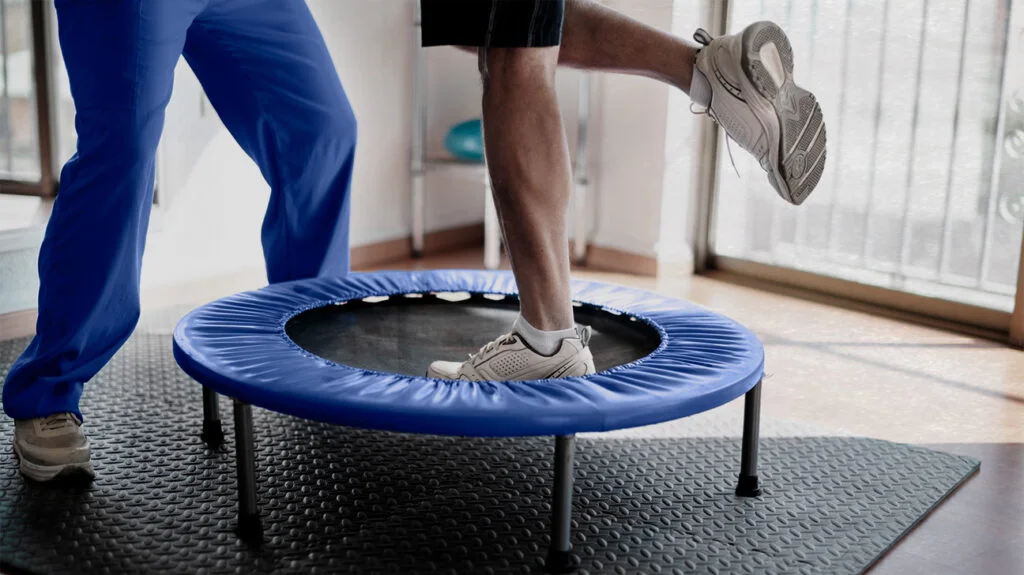Health
How to Improve Your Sleep Quality
The good news is that you can improve your quality of sleep at home without prescription medication or major changes in your day.

Did you know that humans used to sleep in “shifts” just a few centuries ago? These patterns, known as segmented or bimodal sleep, were the norm across the world. People had difficulty staying asleep, so they’d go to sleep after dusk, wake up a bit later, stay up for an hour or two, then go back to sleep until dawn.
Like our ancestors of yore, nearly 20% of adults struggle with sleeping. In fact, 50-70 million Americans have been diagnosed with a chronic sleep disorder.
What’s causing this societal shift back to our old ways? While it’s different for everyone, much of the evolution has to do with an increase in stress and pressure. When you can’t ‘shut your brain off,’ it’s hard to fall and stay in a restful slumber.
The good news is that you can improve your quality of sleep at home without prescription medication or major changes in your day. Follow these simple tips, and see if they help you get — and stay — in the Land of Nod!
1. Get Routine-Oriented
What’s your schedule look like? If you’re constantly on the go all day, your brain is on high alert for changes in your surroundings. The adrenaline it produces to keep you “safe” stays in your system for hours after you don’t need it anymore.
Find a way to include “calm down” time in your day at least an hour before you want to fall asleep. This shouldn’t include anything with electronics unless you have blue light blockers since that kind of lighting interferes with your natural sleep cycle.
Instead of screen time, consider other ways you can release the adrenaline and stress hormones of the day before bedtime. Read a book, write in your journal, listen to soothing music, play a card game with a loved one, or meditate. Try to avoid anything that gets you worked up and energized.
Schedule your bedtime and wake-up times consistently, and include no more than eight hours. Aim for seven hours. Anything more than that can make you more tired than rested. By sticking to a consistent cycle, you’re training your brain when to go to sleep and wake up, just as those segmented sleepers did.
2. Watch Your Diet
It’s not just what you put in your body that matters to your sleep cycle. It’s also when.
If you love caffeine, chocolate, greasy food, and big meals, pay attention to the time before you indulge. Be sure that you have a few hours to work the stimulants out of your system and give your stomach time to digest the meal. Otherwise, the discomfort of the digestion process can interfere with your restful sleep.
The same thing happens if you go to bed hungry, though, so enjoy a light meal a couple of hours before bedtime.
Be mindful of any alcohol or nicotine intake, too. They both have stimulating properties, even though alcohol can help you fall asleep. Chances are, you’ll wake up after a bit and struggle to fall back into slumber.
3. Declutter Your Space
Is your room a place of peace and tranquility, or your preferred spot to display all your books, pictures, and favorite collections?
If you’re using the bedroom to store your stuff, even if it looks great and you love it, it’s distracting you from getting quality sleep.
The way your brain processes stimuli isn’t conscious. You don’t look around your room and go, “Book, TV, dresser …” But your brain recognizes everything in its peripheral and front vision, all the sounds around you, and any other sensations. It does this while you’re sleeping, too.
Give your mind a rest by keeping the clutter in your room to a minimum. You can still store your things in drawers and tuck them away as long as they’re out of sight. Limit any scents to light, relaxing aromas like lavender.
4. Reduce Discomfort and Worries Before Bed
Is there something consistently waking you up at night, such as a sore neck or back, or worries you can’t shut off? Instead of waiting until the middle of the night to deal with them, go ahead and find a way to address them before you lay down.
Maybe you’ve noticed regular morning headaches or neck and shoulder issues during the night. Coupled with other symptoms, like sore teeth and gums, this could be a sign that you’re clenching and grinding your jaw. Invest in a custom-made night guard and see if that helps improve your sleep and reduce discomfort.
If you know something is bothering you and is likely to cause you to toss and turn, take a few minutes and write it down. It might sound unbelievable, but experts say that getting those thoughts out of your brain and on paper makes your brain feel “heard,” and it will stop barraging you with those worries at inopportune times.
And if you know that a bed or pillow is simply not comfortable, replace it. Mattresses are expensive, but you can buy an inexpensive mattress topper and see if that helps.
Conclusion
Getting the right amount of sleep is a precarious combination of a lot of factors. What you eat, drink, listen to, watch, and do all play a role in your sleep quality!
But while it may seem like you need a magic spell to make it happen, remember that our ancestors also struggled. They found a way to adjust their sleep cycles and still stay functional, and with these tips, you can, too!
Read More: Intraday Trading
Health
Mind–Body Mastery: Unlocking Wellness at Apollo Wellness in Coral Gables

In recent years, the concept of wellness has expanded far beyond diet and exercise. People are increasingly recognizing the profound link between physical health and mental well-being—a connection often referred to as mind–body balance. This balance is not achieved overnight but cultivated through consistent habits, recovery practices, and intentional living.
In Coral Gables, where modern lifestyles often come with high stress and fast-paced routines, wellness centers have evolved to meet these changing needs. By combining advanced recovery therapies, science-backed treatments, and mindfulness practices, residents are finding new ways to restore energy and live with greater vitality.
Understanding the Mind–Body Connection
The relationship between the mind and body has been studied for centuries, yet only recently have science and technology begun to fully explain it. Stress, sleep, nutrition, and physical activity are all factors that influence not just how our bodies perform, but also how our minds function.
When the body experiences fatigue or inflammation, cognitive clarity often declines. Similarly, prolonged stress can manifest physically, leading to muscle tension, headaches, and immune suppression. Achieving balance means supporting both systems simultaneously—improving physical health to strengthen mental resilience and cultivating mindfulness to enhance recovery.
Holistic wellness approaches, such as those now popular in Coral Gables, aim to bridge this gap by combining recovery treatments with relaxation and rejuvenation techniques that address the entire person, not just symptoms.
The Evolution of Wellness Centers
Traditional gyms once focused solely on physical conditioning—lifting weights, building endurance, or losing weight. Today’s wellness centers represent a significant evolution. They integrate evidence-based therapies designed to help individuals recover faster, manage stress, and enhance longevity.
In Coral Gables, this modern approach has become especially relevant. Residents seek balance between demanding careers, social lives, and personal well-being. As a result, advanced wellness centers offer a comprehensive menu of treatments, from cellular recovery and detoxification to mental relaxation and rejuvenation therapies.
These spaces now emphasize total-body wellness, merging fitness, technology, and holistic health into a single experience. The shift toward prevention and recovery underscores a growing understanding: optimal health is about maintaining equilibrium, not just responding to illness or fatigue.
Core Wellness Treatments That Promote Mind–Body Harmony
Modern wellness centers in Coral Gables utilize several therapies that work synergistically to restore the body’s natural balance while promoting relaxation and clarity of mind.
1. Red Light Therapy
Red light therapy, also known as photobiomodulation, uses specific wavelengths of light to penetrate deep into the skin, stimulating cellular regeneration and improving circulation. This therapy enhances muscle recovery, reduces inflammation, and supports collagen production—benefiting both body and skin health. It’s an effective way to accelerate post-workout recovery while promoting a calm, restorative state.
2. IV Therapy
IV nutrient therapy delivers vitamins, minerals, and hydration directly into the bloodstream for immediate absorption. It helps combat fatigue, dehydration, and immune stress while replenishing nutrients lost through daily activity. For many Coral Gables residents, IV therapy offers a quick, restorative solution for maintaining energy and resilience.
3. Cryotherapy
Cryotherapy exposes the body to subzero temperatures for short durations, triggering a physiological response that reduces inflammation, boosts circulation, and releases endorphins. The result is both physical rejuvenation and mental clarity—a refreshing, natural mood enhancer.
4. Massage and Recovery Treatments
Therapeutic massages target muscle tension, improve mobility, and relieve stress. These treatments also promote better blood flow and faster recovery from physical strain, helping the body stay flexible and strong.
5. Mindfulness and Relaxation Techniques
While physical treatments aid the body, mindfulness practices such as meditation, breathwork, and guided relaxation calm the nervous system and enhance focus. Together, these methods help restore emotional balance and improve mental resilience.
How a Personalized Approach Enhances Wellness
No two individuals have the same wellness needs. Factors such as stress levels, sleep patterns, activity habits, and nutrition all play a role in shaping personal well-being. A personalized wellness plan considers these elements to create a targeted approach for optimal results.
For example, someone managing chronic stress may benefit from a combination of cryotherapy for inflammation relief and guided meditation for mental relaxation. Another individual focusing on performance recovery may rely on red light therapy and IV infusions to accelerate muscle repair and energy restoration.
Personalization ensures that wellness is both effective and sustainable. Rather than offering one-size-fits-all solutions, modern wellness centers use assessments and consultations to tailor programs that evolve with the client’s needs.
Modern Wellness Trends in Coral Gables
Coral Gables, known for its balance of sophistication and healthy living, has become a hub for next-generation wellness practices. Several trends are redefining how residents approach health and recovery:
1. Integration of Technology
Wearable devices and health apps now allow individuals to track sleep, hydration, and activity levels. These insights help align wellness treatments with real-time data, improving effectiveness and accountability.
2. Preventive Health Focus
Rather than waiting for fatigue or illness, preventive therapies aim to keep the body strong and balanced. Treatments such as IV therapy and infrared sessions help maintain wellness before issues arise.
3. Longevity and Anti-Aging Programs
Modern wellness centers are incorporating longevity-focused therapies that promote cellular regeneration, hormonal balance, and energy optimization—helping individuals look and feel younger naturally.
4. Community and Lifestyle Integration
Wellness is becoming a shared lifestyle. Group mindfulness sessions, yoga classes, and recovery lounges encourage community connection and accountability, enhancing motivation and emotional support.
Tips for Maintaining a Mind–Body Wellness Routine
While professional treatments enhance health, long-term wellness also depends on daily habits and self-awareness. Here are some practical tips for maintaining balance:
1. Prioritize Rest and Sleep
Recovery begins with rest. Quality sleep restores brain function, muscle repair, and hormone balance. Setting consistent bedtime routines supports natural circadian rhythms.
2. Stay Hydrated and Eat Nutrient-Dense Foods
Proper hydration supports digestion, circulation, and energy. Combine this with a balanced diet rich in whole foods, healthy fats, and lean proteins to nourish the body from within.
3. Move Mindfully
Exercise doesn’t always mean intensity. Yoga, walking, or stretching can help improve circulation and reduce stress while fostering a stronger mind–body connection.
4. Practice Mindfulness
Meditation, deep breathing, and gratitude journaling cultivate mental clarity and resilience. Even a few minutes daily can significantly reduce anxiety and improve focus.
5. Schedule Regular Recovery Sessions
Incorporating therapies like red light, cryotherapy, or massage on a consistent basis supports muscle recovery and relaxation—preventing burnout and maintaining energy levels.
6. Listen to Your Body
Pay attention to signals like fatigue, soreness, or irritability. These are cues that your body needs rest or nourishment. Consistent awareness helps maintain equilibrium.
The Lasting Value of Holistic Wellness
The pursuit of wellness is not about quick fixes—it’s about building sustainable habits that support long-term vitality. True wellness integrates physical, emotional, and mental health into one cohesive approach.
In Coral Gables, this philosophy aligns perfectly with the city’s lifestyle—an appreciation for both luxury and balance. Residents are embracing evidence-based therapies, clean nutrition, and mindful living to enhance every aspect of their well-being.
By understanding the power of the mind–body connection, individuals can create a lifestyle that promotes energy, focus, and fulfillment while minimizing stress and fatigue.
Conclusion
Wellness is not a destination but a lifelong journey—one that thrives on awareness, consistency, and care. When the mind and body work in harmony, everything from energy to mood and performance improves.
Modern therapies such as red light therapy, IV infusions, and cryotherapy offer innovative ways to rejuvenate both body and mind, empowering individuals to look, feel, and function at their best.
If you’re ready to take a proactive step toward holistic health, contact Apollo Wellness in Coral Gables for a personalized consultation. Their integrative approach combines medical science with restorative care to help clients achieve balance, recovery, and lasting vitality.
For those in Coral Gables seeking a space where science meets serenity, Apollo Wellness exemplifies the future of wellness—where evidence-based practices nurture the mind, body, and spirit in perfect harmony.
Health
Achieving Optimal Oral Health with Professional Dental Care

Who wants to learn the simplest way to protect your smile?
Eighty-seven million people in Australia and almost 3.5 billion people globally suffer from oral diseases and conditions. That’s almost half of the global population suffering from preventable dental issues.
But here’s the kicker…
The majority of these issues are avoidable with a proactive approach to dental care. Regular visits to the dentist are not just about cleaning your teeth, but also to support and protect your overall well-being.
The simple truth is that the key to having a healthy mouth is to find a dental practice that will provide gentle, professional dental care with an emphasis on prevention and early intervention. When dental professionals adopt an intentional and thorough approach to patient care, they can help you maintain oral health by spotting problems before they escalate into painful (and expensive) dental emergencies.
So why do people allow themselves to get into such a state with their teeth? Let’s explore.
You’ll Learn:
- The Price of Ignoring Your Teeth
- Why Visiting the Dentist Beats Just Cleaning At Home
- How to Choose a Dental Practice That Meets Your Needs
- Preventive Dental Care Saves Money in the Long Run
The Price of Ignoring Your Teeth
Skipping the dentist is often a short-term money-saving tactic with some big long-term financial consequences.
Here is a surprising fact. 46% of Americans say they put off or forgo dental care because of cost. The sad part is that this choice can result in people actually spending more money in the long run.
Think about it.
The cost of filling a small cavity at an early stage is a few hundred dollars. But if you allow the issue to fester and progress, the simple filling solution can become a root canal. And if the issue progresses even more you might end up needing a tooth extraction and implant, all of which are far more expensive than a filling.
If that is not enough…
When people skip dental check-ups and cleaning, what is normal and treatable gets worse. The cavities deepen. Gum disease advances. Infections worsen. And the longer these issues go unchecked, the more complicated, time-consuming and costly the treatment.
The result? A simple cavity that you could have fixed with a quick, inexpensive filling a few years ago now costs a small fortune and requires invasive treatment.
It is the same with gum disease. Periodontal disease that was initially treatable and in the early stages might require surgery, medications and more if you put off dental check-ups and cleanings.
Here’s the reality of the situation.
The longer you delay your preventive check-ups, the worse the oral health issues become. And the longer you put off treatment, the more you will need to spend to get your oral health back on track.
What most people don’t realize is that…
Oral health has an impact on your overall health. Did you know that there are proven links between dental issues and conditions such as heart disease, diabetes, and even Alzheimer’s disease. Your mouth health is connected to your general health in many ways that you may not have realized.
Why Visiting the Dentist Beats Just Cleaning At Home
Brushing your teeth and flossing is vital. There is no argument there.
However, it is not the entire answer.
Regular professional dental cleanings remove tartar and plaque that can build up even if you are brushing twice a day and flossing diligently. There are some areas in the mouth that are difficult to reach or see on your own.
And here is why:
Dental professionals have the tools and expertise to clean between the teeth and below the gum line. They can spot the very early warning signs of cavities, gum disease and even oral cancer that you would never see on your own.
Here is another thing to consider…
Regular professional cleaning actually makes your at-home cleaning routine more effective. Think of a professional cleaning every six months as resetting your oral health baseline. When your teeth are professionally cleaned every six months, your daily brushing and flossing are more effective at keeping that pristine, healthy level.
Prevention is always cheaper than treatment. It really is that simple.
How to Choose a Dental Practice That Meets Your Needs
Not every dentist office is equal…
Finding the right one can make all the difference as to whether you show up for your appointment or not.
Look for a dental practice that makes patient comfort a priority. Dentist anxiety is a real thing, and a good dental team will understand this. They will take the time to explain procedures, address your questions and concerns and make you feel at ease.
Here are some additional things to consider:
- Modern equipment and technology
- An emphasis on prevention not just treatments
- Transparent communication about costs and treatment options
- Scheduling flexibility
- A team that truly cares about your oral health objectives
The right dental practice will become a partner in your oral health journey. They will not just address problems but help you to prevent them in the first place.
Preventive Dental Care Saves Money in the Long Run
Let’s talk about the financial side of things for a moment…
Preventive dental care is far less expensive than restorative dental treatments. A routine cleaning and check-up is a fraction of the cost of a crown, root canal, or dental implant.
Let’s see how the math works:
Visiting the dentist twice a year for cleaning and check-up might cost you a few hundred dollars. But a single dental implant? Now we are talking about anything from $3,000 to $5,000.
There is a massive difference.
Preventive check-ups enable dental professionals to catch issues early and intervene with simple, affordable treatments. If you leave it too long, the same issues will need complex, expensive treatments.
Think of preventive dental care like an oil change for your car. Neglect it and you might end up having to replace the whole engine. Keep on top of it and your car will run smoothly for years.
Your teeth are the same.
Regular check-ups enable your dental team to monitor your oral health over the long term. They can track changes, identify trends and intervene before the issues get out of control.
Taking Control of Your Oral Health
Professional dental care is not a luxury. It is a necessity if you want to maintain a healthy mouth.
The facts are clear. Regular dental check-ups enable you to spot problems early, prevent issues from occurring in the first place, and save money in the long term.
And here is something that many people do not realize…
Good oral health benefits your entire body and overall well-being. It reduces your risk of serious health conditions. It also means that you can eat comfortably, speak clearly and smile with confidence.
The bottom line is this:
Investing in professional dental care is one of the smartest health decisions that anyone can make. Seek out a practice that can offer comprehensive, gentle care and that has an emphasis on prevention. Make regular appointments a priority.
You will thank yourself later.
You do not have to wait until you have a toothache to see a dentist. By then the damage has already been done. Take charge of your oral health today by making preventive dental care a priority.
Because when it comes to your teeth, an ounce of prevention is worth a pound of cure.
Health
Food, Movement, Medicine: A Simple RA Pain Game Plan

Rheumatoid arthritis (RA) is a chronic autoimmune condition that causes joint inflammation, pain, and stiffness. While the daily discomfort can be challenging, a simple, sustainable plan can significantly improve quality of life. Effective management often begins with small, consistent changes in three key areas: nutrition, exercise, and medical care. For those looking to manage RA with support from an arthritis and rheumatic care center, this guide provides practical strategies to reduce symptoms, protect joints, and boost energy levels.
Nourish Your Body With Joint-Friendly Foods
Your diet significantly impacts inflammation, which can either help or harm RA symptoms. While no food can cure RA, many find relief by adopting anti-inflammatory eating habits.
Key principles to follow:
- Focus on whole foods: Include fresh fruits, vegetables, whole grains, legumes, and lean proteins.
- Incorporate omega-3 fats: Found in fatty fish, flaxseeds, and walnuts, these healthy fats may reduce joint inflammation.
- Limit processed foods: Refined sugar, fried snacks, and processed meats can contribute to inflammation.
- Stay hydrated: Drinking enough water can reduce joint stiffness and support energy levels.
- Mind your gut: A healthy gut microbiome supports the immune system. Probiotic-rich foods like yogurt, kefir, and fermented vegetables may help.
Start with small changes, like adding berries to your breakfast or swapping soda for herbal tea. A dietitian at an arthritis care center can help create a plan tailored to your needs.
Move Your Body, Even on Hard Days
Exercise may seem counterintuitive when your joints hurt, but gentle movement can reduce pain and stiffness. It also boosts mood, sleep, and muscle strength, all essential for managing RA.
Try these movement strategies:
- Start slow: Low-impact activities like walking, swimming, or cycling are gentle on joints.
- Include stretching: Gentle stretches improve flexibility and circulation, especially when done after waking up.
- Try resistance training: Light strength exercises build muscle that supports your joints.
- Use assistive tools if needed: Don’t hesitate to use braces, supportive shoes, or grab bars to stay active safely.
- Respect your limits: Avoid pushing through intense flare-ups. Rest is part of the plan.
A regular movement routine, even 10–15 minutes daily, can significantly improve mobility and reduce flare-up frequency. Your local care center can also connect you with physical therapists specializing in arthritis-friendly exercise programs.
Understand and Use Medical Treatments Wisely
Medication is often crucial for RA, reducing inflammation and preventing joint damage. However, it’s most effective when combined with lifestyle changes and professional guidance.
Helpful steps to take with your care team:
- Learn about your medications: Know what each one does, how to take it, and potential side effects.
- Stick to a routine: Take medications consistently and set reminders if needed.
- Track your symptoms: Use a journal or app to log pain levels, fatigue, and triggers. This helps your provider make adjustments.
- Ask questions: Don’t hesitate to bring up concerns during appointments. You deserve to feel confident about your treatment.
- Monitor long-term health: Your care team should also check bone density, heart health, and infection risk as part of your RA plan.
An arthritis and rheumatic care center gives you access to specialists who understand autoimmune conditions and can adjust your treatment plan.
Create a Personalized RA Game Plan
No two RA journeys are the same. That’s why a flexible plan—one that adjusts as your symptoms, needs, and lifestyle change—is key. A holistic game plan includes:
- Meal planning that supports energy and reduces inflammation
- Daily movement goals adapted to how you feel each day
- Scheduled check-ins with healthcare providers
- Mental health support, including stress management and rest
- Community support—whether that’s a friend, support group, or local program
A patient-focused arthritis and rheumatic care center can help you build this kind of plan and give you the confidence to manage RA without feeling alone.
Conclusion
Living with rheumatoid arthritis doesn’t mean you have to live in constant pain. By following a balanced plan that includes nutritious meals, regular exercise, and personalized medical care, you can better manage your condition and maintain a good quality of life. For lasting solutions, consider visiting an arthritis and rheumatic care center in Glenview. A comprehensive approach can help make daily life with RA more manageable—and even enjoyable.
-

 Finance3 years ago
Finance3 years agoProfitable Intraday Trading Advice For Novices
-

 Gaming3 years ago
Gaming3 years agoSubway Surfers Unblocked | Subway Surfers Unblocked 66
-

 Internet2 years ago
Internet2 years agoWelcome to banghechoigame.vn – Your One-Stop Destination for Online Gaming Fun!
-

 Gaming3 years ago
Gaming3 years agoMinecraft Unblocked Games 66 | Unblocked Games Minecraft
-

 Gaming3 years ago
Gaming3 years agoGoogle Baseball Unblocked | Google Doodle Baseball Unblocked 66
-

 Internet2 years ago
Internet2 years agoPremium Games Unblocked: Unleash Your Gaming Potential
-

 Gaming3 years ago
Gaming3 years agoTunnel Rush Unblocked | Tunnel Rush Unblocked 66
-

 Gaming2 years ago
Gaming2 years agoRocket League Unblocked – Rocket League 2D Unblocked

























